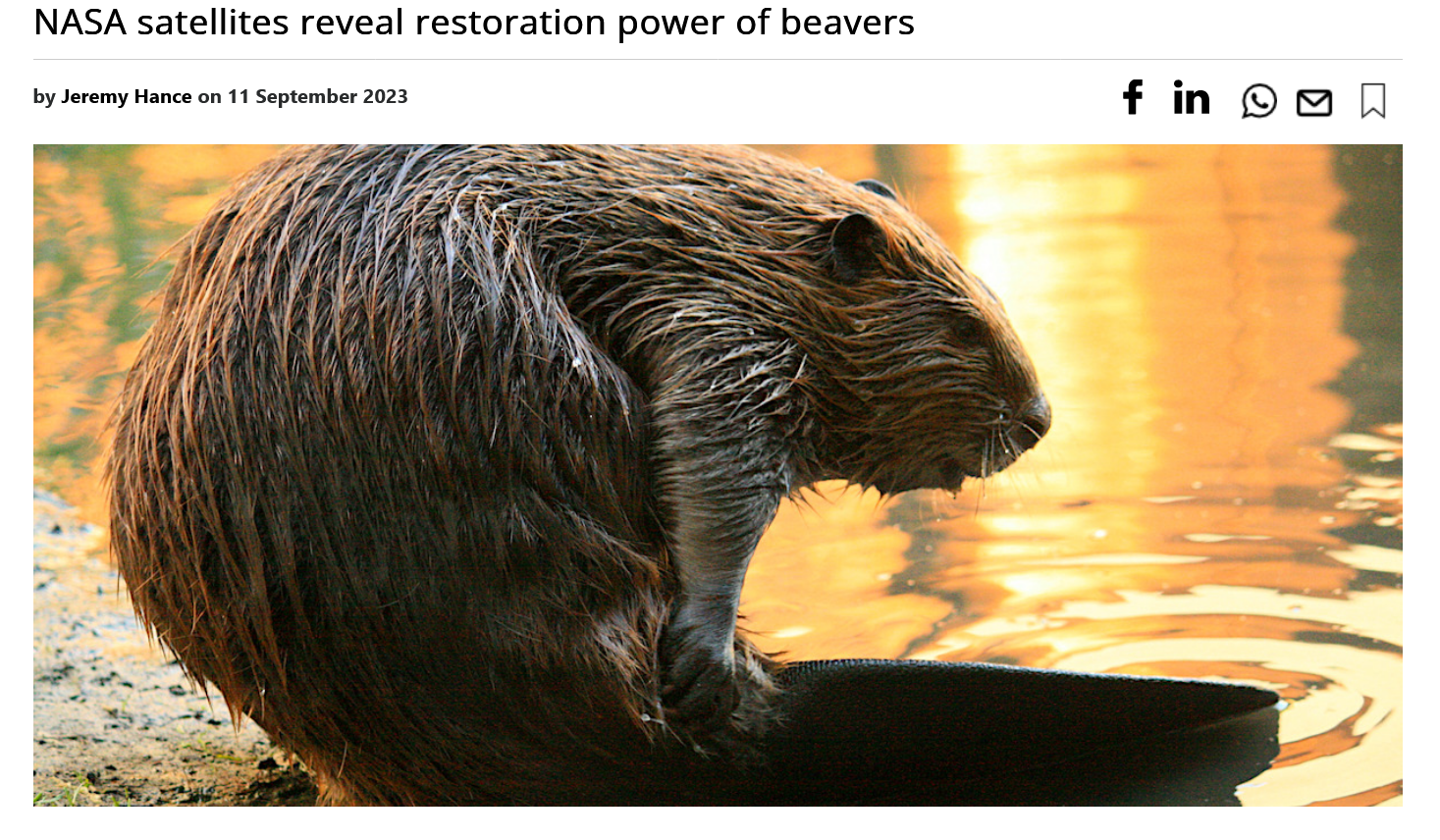The sad truth is I will never get tired of seeing Cheryl’s awesome grooming photo of our Martinez beaver and the million dollar sheet pile wall show up in articles around the country or even around the planet. Think about what it means that this photo has lasted and not been swapped by wikipedia in nearly 15 years.

 If humans went extinct tomorrow, who would rule the world?
If humans went extinct tomorrow, who would rule the world?
Beavers.
Well, at least in the Northern Hemisphere. These tree-felling, water-slowing, wetland-creating rodent engineers have a massive impact wherever they live. Indeed, when it comes to their power over water flow, Cory Mosby says, “I’m not aware of another species that does this (save humans) on the scale that a beaver population can.”
A biologist with the Idaho Department of Fish and Wildlife, Mosby knows the power of these mammals intimately. And now NASA — yes, the same agency that sends people into space and searches for killer comets — is helping researchers get a more detailed look at how beavers can transform our world for the better, including combating climate change.
“NASA is interested in how satellite Earth observations can be used for natural resource management,” says Cynthia Schmidt, the associate program manager for the NASA Ecological Conservation Program. In this particular case, Schmidt says, NASA is keen to use satellite research to help scientists “better understand the impacts of rewilding for ecosystem restoration.”
I’m interested in that too.






































